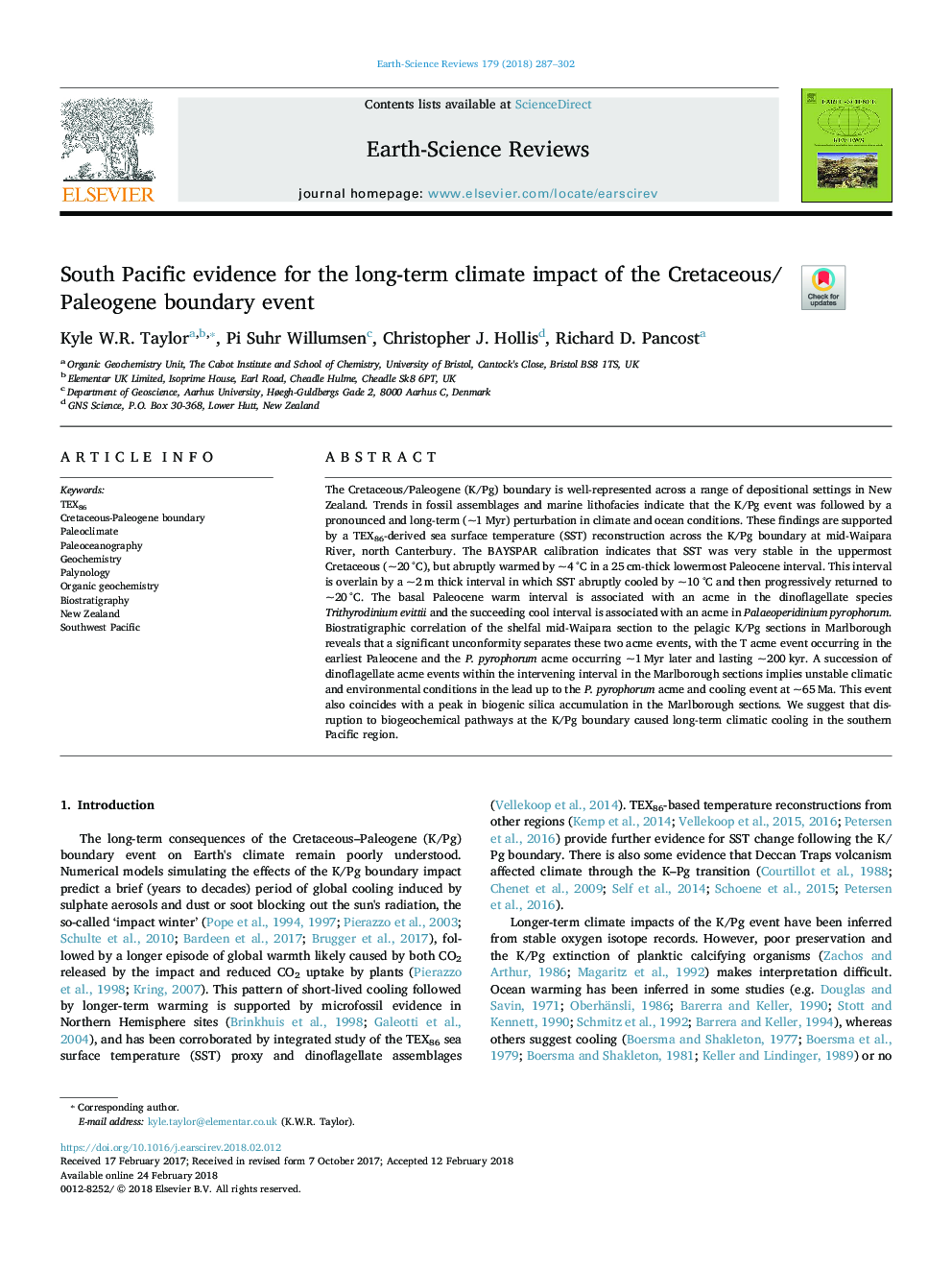| Article ID | Journal | Published Year | Pages | File Type |
|---|---|---|---|---|
| 8912986 | Earth-Science Reviews | 2018 | 16 Pages |
Abstract
The Cretaceous/Paleogene (K/Pg) boundary is well-represented across a range of depositional settings in New Zealand. Trends in fossil assemblages and marine lithofacies indicate that the K/Pg event was followed by a pronounced and long-term (~1â¯Myr) perturbation in climate and ocean conditions. These findings are supported by a TEX86-derived sea surface temperature (SST) reconstruction across the K/Pg boundary at mid-Waipara River, north Canterbury. The BAYSPAR calibration indicates that SST was very stable in the uppermost Cretaceous (~20â¯Â°C), but abruptly warmed by ~4â¯Â°C in a 25â¯cm-thick lowermost Paleocene interval. This interval is overlain by a ~2â¯m thick interval in which SST abruptly cooled by ~10â¯Â°C and then progressively returned to ~20â¯Â°C. The basal Paleocene warm interval is associated with an acme in the dinoflagellate species Trithyrodinium evittii and the succeeding cool interval is associated with an acme in Palaeoperidinium pyrophorum. Biostratigraphic correlation of the shelfal mid-Waipara section to the pelagic K/Pg sections in Marlborough reveals that a significant unconformity separates these two acme events, with the T acme event occurring in the earliest Paleocene and the P. pyrophorum acme occurring ~1â¯Myr later and lasting ~200â¯kyr. A succession of dinoflagellate acme events within the intervening interval in the Marlborough sections implies unstable climatic and environmental conditions in the lead up to the P. pyrophorum acme and cooling event at ~65â¯Ma. This event also coincides with a peak in biogenic silica accumulation in the Marlborough sections. We suggest that disruption to biogeochemical pathways at the K/Pg boundary caused long-term climatic cooling in the southern Pacific region.
Keywords
Related Topics
Physical Sciences and Engineering
Earth and Planetary Sciences
Geology
Authors
Kyle W.R. Taylor, Pi Suhr Willumsen, Christopher J. Hollis, Richard D. Pancost,
